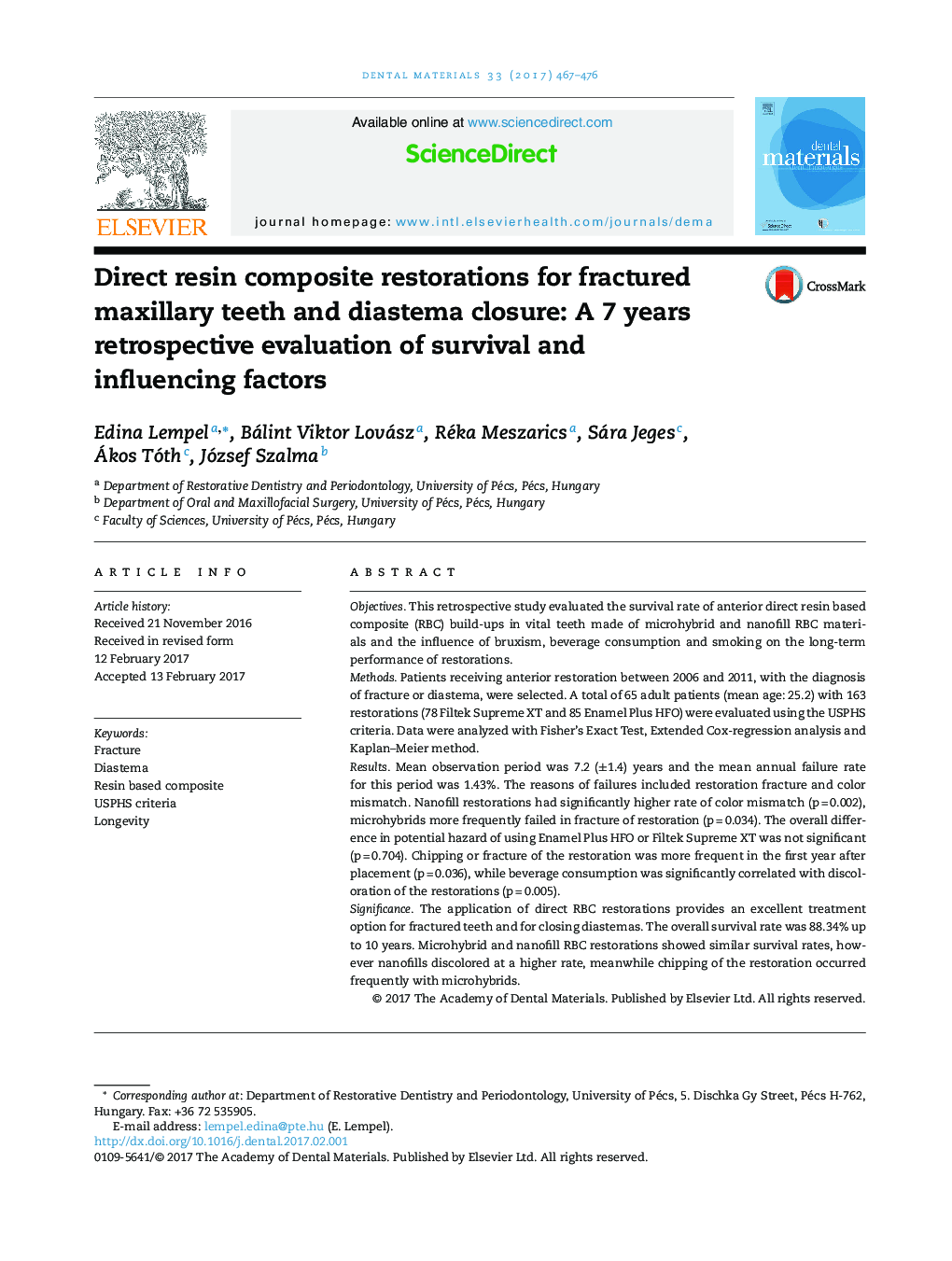| Article ID | Journal | Published Year | Pages | File Type |
|---|---|---|---|---|
| 5432902 | Dental Materials | 2017 | 10 Pages |
ObjectivesThis retrospective study evaluated the survival rate of anterior direct resin based composite (RBC) build-ups in vital teeth made of microhybrid and nanofill RBC materials and the influence of bruxism, beverage consumption and smoking on the long-term performance of restorations.MethodsPatients receiving anterior restoration between 2006 and 2011, with the diagnosis of fracture or diastema, were selected. A total of 65 adult patients (mean age: 25.2) with 163 restorations (78 Filtek Supreme XT and 85 Enamel Plus HFO) were evaluated using the USPHS criteria. Data were analyzed with Fisher's Exact Test, Extended Cox-regression analysis and Kaplan-Meier method.ResultsMean observation period was 7.2 (±1.4) years and the mean annual failure rate for this period was 1.43%. The reasons of failures included restoration fracture and color mismatch. Nanofill restorations had significantly higher rate of color mismatch (p = 0.002), microhybrids more frequently failed in fracture of restoration (p = 0.034). The overall difference in potential hazard of using Enamel Plus HFO or Filtek Supreme XT was not significant (p = 0.704). Chipping or fracture of the restoration was more frequent in the first year after placement (p = 0.036), while beverage consumption was significantly correlated with discoloration of the restorations (p = 0.005).SignificanceThe application of direct RBC restorations provides an excellent treatment option for fractured teeth and for closing diastemas. The overall survival rate was 88.34% up to 10 years. Microhybrid and nanofill RBC restorations showed similar survival rates, however nanofills discolored at a higher rate, meanwhile chipping of the restoration occurred frequently with microhybrids.
